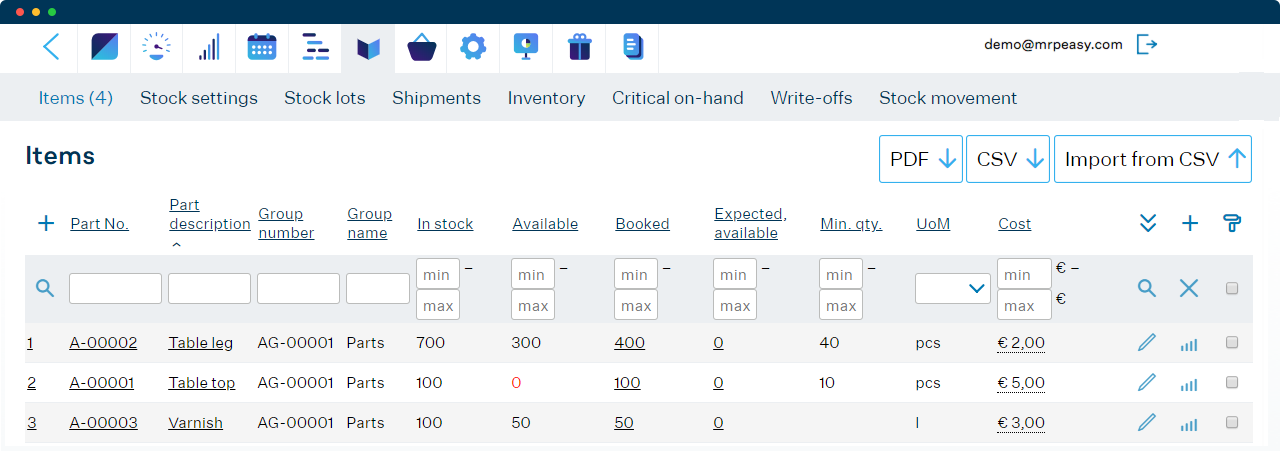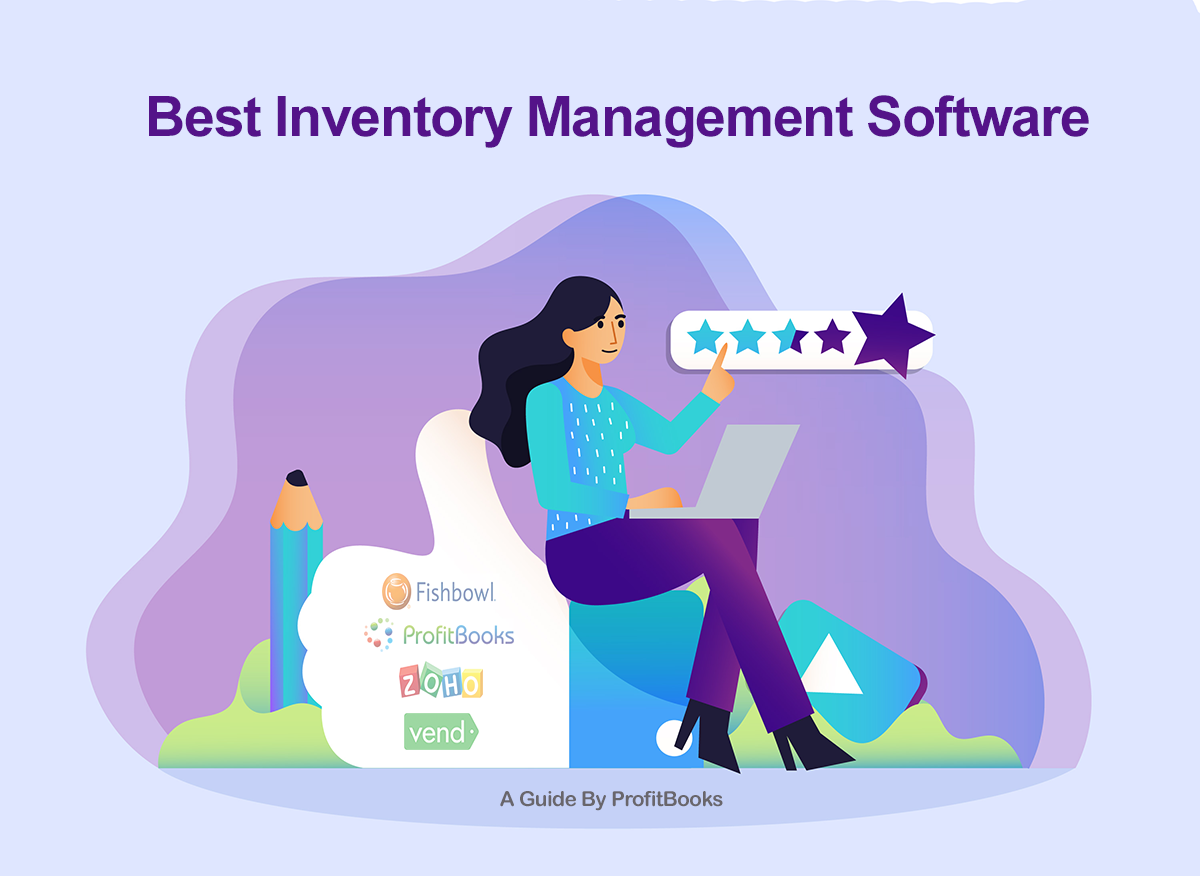Small business manufacturing inventory software is revolutionizing the way small businesses manage their inventory. By streamlining processes, reducing costs, and improving efficiency, this software is becoming an essential tool for small businesses looking to grow and succeed.
Inventory management is a critical aspect of any manufacturing business. Small businesses, in particular, face unique challenges in managing their inventory, including limited resources, complex supply chains, and fluctuating demand. Small business manufacturing inventory software is designed to address these challenges and help small businesses optimize their inventory management processes.
Inventory Management Features
For small businesses, inventory management is crucial to ensure efficient operations, avoid stockouts, and maximize profits. It involves tracking inventory levels, forecasting demand, and optimizing stock replenishment.
Key inventory management features for small businesses include:
Real-Time Inventory Tracking
- Provides an accurate and up-to-date view of inventory levels across multiple locations.
- Helps prevent overstocking or understocking, reducing waste and lost sales.
Demand Forecasting
- Predicts future demand based on historical data, seasonality, and market trends.
- Allows businesses to optimize stock levels and avoid stockouts, ensuring customer satisfaction.
Purchase Order Management
- Streamlines the process of creating and tracking purchase orders.
- Helps ensure timely delivery of inventory and reduces the risk of stockouts.
Barcode Scanning
- Enables efficient and accurate inventory tracking through barcode scanning.
- Reduces errors and improves inventory accuracy.
Benefits of Using Inventory Management Software
- Automates inventory processes, saving time and reducing errors.
- Provides real-time visibility into inventory levels, enabling better decision-making.
- Optimizes stock levels, reducing waste and lost sales.
- Improves customer satisfaction by ensuring availability of products.
Types of Small Business Manufacturing Inventory Software

There are several types of inventory software designed specifically for small business manufacturing operations, each with unique features and capabilities. Understanding the differences between these types is crucial for choosing the software that best meets the specific needs of your business.
Cloud-Based Inventory Software
- Hosted on remote servers, accessible from any device with an internet connection.
- Offers scalability and flexibility, allowing businesses to easily adjust their inventory management system as needed.
- Eliminates the need for on-premise hardware and IT maintenance.
On-Premise Inventory Software
- Installed on the business’s own computers or servers.
- Provides more control over data security and customization.
- May require additional hardware and IT support.
Integrated Inventory Software
- Combines inventory management with other business functions, such as accounting, sales, and purchasing.
- Provides a comprehensive view of the business’s operations.
- May be more expensive and complex to implement than standalone software.
Factors to Consider When Choosing Inventory Software
When selecting inventory software for a small business manufacturing operation, it’s important to consider the following factors:
- Business size and complexity: Choose software that can accommodate the current and future inventory needs of the business.
- Inventory management features: Ensure the software has the necessary features to support the business’s inventory management processes.
- Integration capabilities: Consider whether the software can integrate with other business systems, such as accounting or ERP.
- Ease of use: The software should be easy to learn and use for all employees who will be responsible for managing inventory.
- Cost: Determine the software’s cost and whether it fits within the business’s budget.
Benefits of Using Small Business Manufacturing Inventory Software

Small businesses in the manufacturing sector can reap significant benefits from implementing inventory software. These software solutions streamline inventory management processes, enhance efficiency, and boost profitability.
One of the key advantages of inventory software is its ability to provide real-time visibility into inventory levels. This allows businesses to track stock levels across multiple locations, ensuring that they have the right products in the right quantities at the right time. By eliminating overstocking and understocking, businesses can reduce waste and optimize their inventory investment.
Improved Efficiency
- Automated inventory tracking reduces manual errors and saves time spent on inventory counts.
- Centralized inventory data allows for quick and easy access to information, eliminating the need for multiple spreadsheets and manual searches.
- Integration with other business systems, such as accounting and CRM, streamlines processes and improves data accuracy.
Enhanced Profitability
- Reduced inventory carrying costs by optimizing stock levels and eliminating overstocking.
- Increased sales revenue by ensuring that products are available to meet customer demand.
- Improved customer satisfaction by reducing the likelihood of backorders and delays.
Return on Investment (ROI)
The ROI from using small business manufacturing inventory software can be substantial. Studies have shown that businesses can expect to see a return of up to 300% on their investment within the first year of implementation. This ROI is achieved through increased efficiency, reduced costs, and improved profitability.
Implementation and Best Practices
Implementing inventory software in a small business can streamline operations and improve efficiency. Here’s a step-by-step guide and best practices to help you get started.
Step-by-Step Implementation Guide, Small business manufacturing inventory software
- Choose the right software: Consider your business’s specific needs, such as the number of SKUs, types of inventory, and integration requirements.
- Gather your data: Collect all necessary inventory information, including item descriptions, quantities, costs, and locations.
- Configure the software: Set up the software according to your business’s requirements, including defining users, permissions, and inventory categories.
- Import your data: Transfer your inventory data into the software using the recommended import method.
- Train your team: Ensure that all users are trained on the software’s functionality and best practices.
- Go live: Launch the software and start using it to manage your inventory.
Best Practices for Using Inventory Software
- Keep your data accurate: Regularly update inventory levels and track stock movements to maintain data integrity.
- Use automated features: Utilize software features such as automatic reordering, inventory forecasting, and reporting to streamline tasks.
- Integrate with other systems: Connect the software with your accounting, CRM, and other relevant systems for a comprehensive view of your business.
- Monitor performance: Regularly review inventory reports and metrics to identify areas for improvement.
- Seek support: Don’t hesitate to contact the software vendor or consult with experts for assistance and guidance.
Common Challenges and Solutions
- Data accuracy: Implement regular audits and reconciliation processes to ensure data integrity.
- User adoption: Provide thorough training and ongoing support to encourage user buy-in and effective use.
- Integration challenges: Work closely with the software vendor and IT team to ensure seamless integration with other systems.
- Cost: Explore cost-effective software options that meet your business’s needs without breaking the bank.
- Complexity: Choose software that is user-friendly and easy to navigate, even for non-technical users.
Case Studies and Success Stories: Small Business Manufacturing Inventory Software

Small businesses that have implemented inventory software have witnessed remarkable improvements in their operations. Let’s explore some inspiring case studies and success stories.
Inventory software has empowered small businesses to streamline their inventory management processes, reduce errors, and optimize stock levels. By leveraging real-time data and automated features, businesses have gained unprecedented visibility and control over their inventory.
Case Study: XYZ Manufacturing
XYZ Manufacturing, a small-scale metal fabrication company, struggled with manual inventory management. The process was time-consuming, prone to errors, and hindered their ability to meet customer demands efficiently.
After implementing an inventory management software, XYZ Manufacturing experienced a significant transformation. The software automated inventory tracking, provided real-time stock updates, and optimized reorder points. This resulted in reduced inventory carrying costs, improved customer satisfaction, and increased production efficiency.
Lessons Learned
- Inventory software can automate manual tasks, freeing up valuable time for business growth.
- Real-time inventory visibility enables businesses to make informed decisions and respond swiftly to market changes.
- Optimizing inventory levels reduces waste and improves cash flow.
Future Trends in Small Business Manufacturing Inventory Software
The future of inventory management for small businesses is poised to be transformed by emerging trends in software solutions. These advancements will redefine how businesses track, manage, and optimize their inventory, leading to increased efficiency, cost savings, and improved customer satisfaction.
Integration with Enterprise Resource Planning (ERP) Systems
Small businesses are increasingly adopting ERP systems to streamline their operations and gain a holistic view of their business. In the future, manufacturing inventory software will seamlessly integrate with ERP systems, enabling real-time data sharing and eliminating manual data entry, reducing errors and improving overall efficiency.
Artificial Intelligence (AI) and Machine Learning (ML)
AI and ML algorithms will play a crucial role in inventory management. These technologies will analyze historical data, identify patterns, and make predictive recommendations for inventory levels, demand forecasting, and reorder points. This will optimize inventory levels, reduce waste, and improve customer service by ensuring availability of products.
Internet of Things (IoT)
The integration of IoT devices into inventory management systems will provide real-time visibility into inventory levels. Sensors on equipment and inventory items will track usage, location, and environmental conditions, enabling businesses to make informed decisions based on accurate and timely data.
Cloud-Based Solutions
Cloud-based inventory management software will continue to gain popularity due to its accessibility, scalability, and cost-effectiveness. These solutions allow businesses to manage their inventory from anywhere, anytime, without the need for expensive hardware or IT support.
Recommendations for Small Businesses
- Embrace Emerging Technologies: Stay informed about the latest trends in inventory management software and consider adopting solutions that leverage AI, ML, IoT, and cloud computing.
- Integrate with ERP Systems: If your business uses an ERP system, prioritize integrating your inventory management software to streamline operations and improve data accuracy.
- Leverage Real-Time Data: Utilize IoT devices and cloud-based solutions to gain real-time visibility into inventory levels and make informed decisions.
- Plan for Scalability: Choose inventory management software that can scale with your business growth and adapt to changing demands.
Epilogue
In conclusion, small business manufacturing inventory software is a powerful tool that can help small businesses improve their efficiency, profitability, and customer satisfaction. By implementing the right software, small businesses can gain a competitive advantage and position themselves for success in today’s competitive market.
Detailed FAQs
What are the benefits of using small business manufacturing inventory software?
Small business manufacturing inventory software offers a range of benefits, including improved inventory accuracy, reduced costs, increased efficiency, and better customer service.
What are the different types of small business manufacturing inventory software available?
There are a variety of small business manufacturing inventory software solutions available, each with its own unique features and capabilities. Some of the most popular types of software include cloud-based systems, on-premise systems, and hybrid systems.
How do I choose the right small business manufacturing inventory software for my business?
When choosing small business manufacturing inventory software, it is important to consider your business’s specific needs and requirements. Factors to consider include the size of your business, the complexity of your inventory, and your budget.